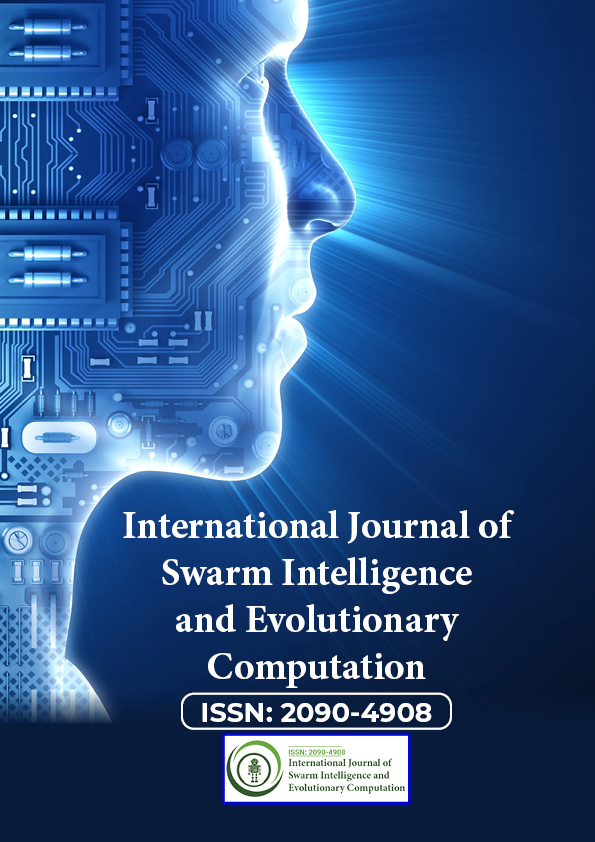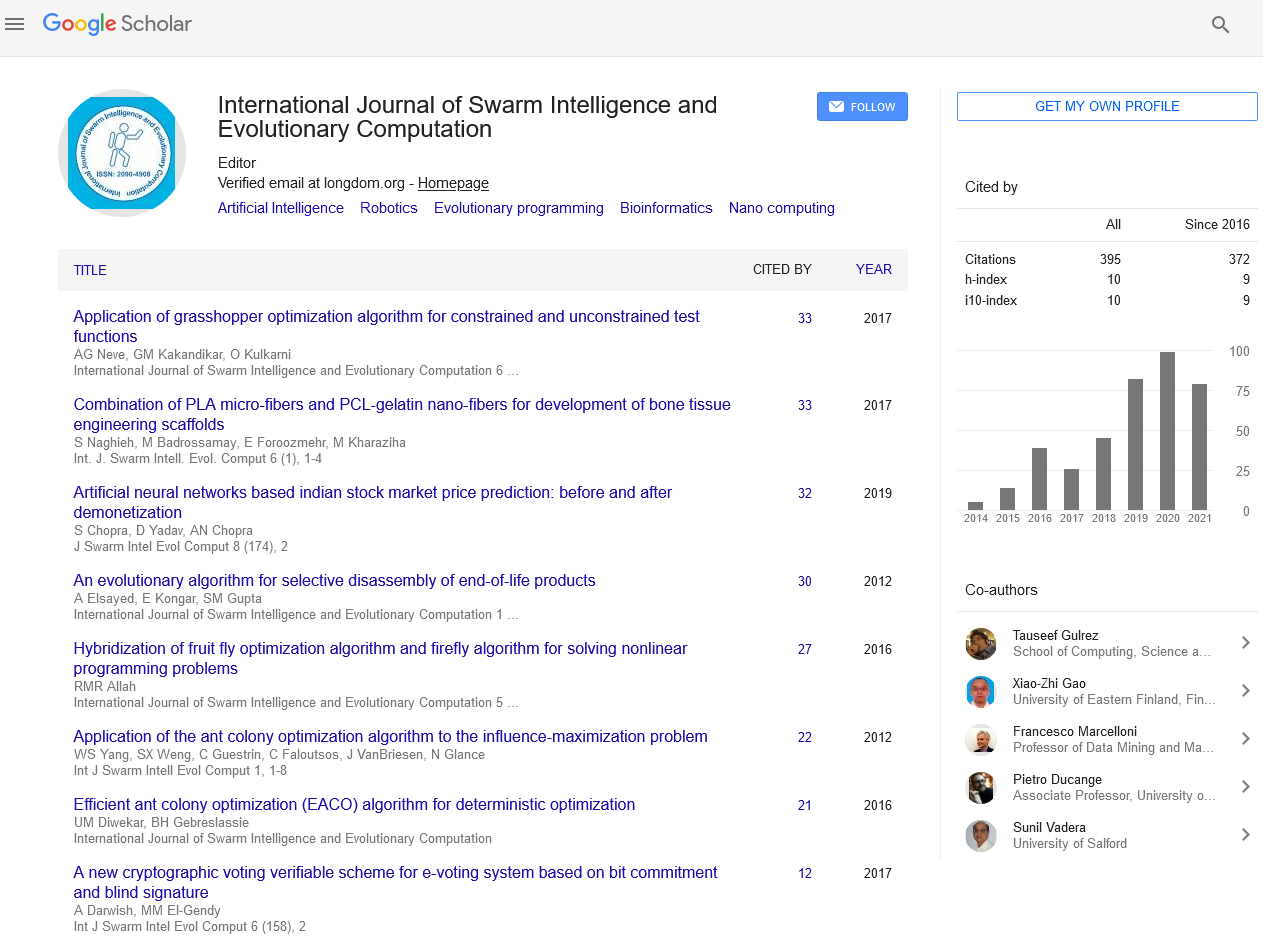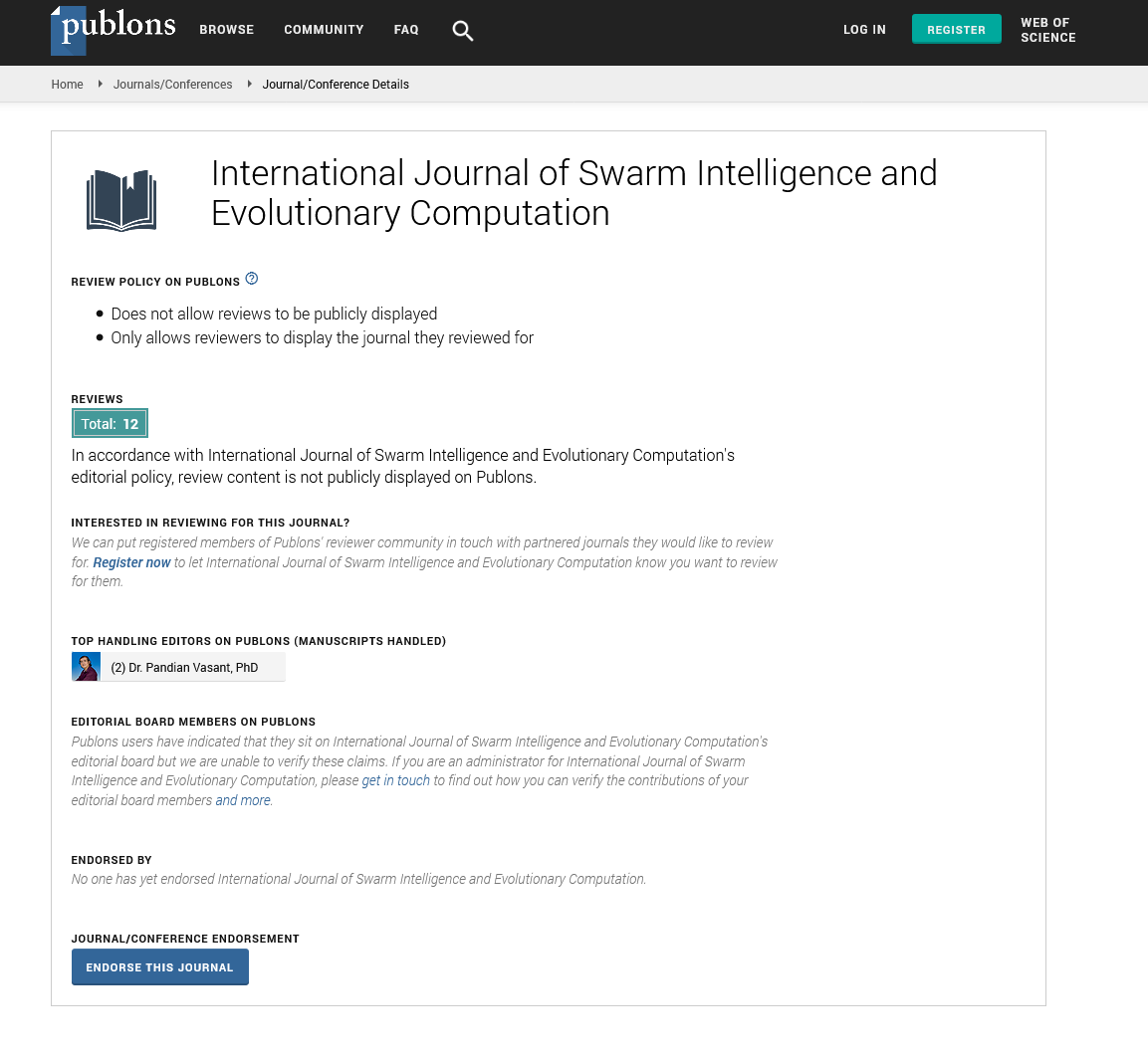Indexed In
- Genamics JournalSeek
- RefSeek
- Hamdard University
- EBSCO A-Z
- OCLC- WorldCat
- Publons
- Euro Pub
- Google Scholar
Useful Links
Share This Page
Journal Flyer

Open Access Journals
- Agri and Aquaculture
- Biochemistry
- Bioinformatics & Systems Biology
- Business & Management
- Chemistry
- Clinical Sciences
- Engineering
- Food & Nutrition
- General Science
- Genetics & Molecular Biology
- Immunology & Microbiology
- Medical Sciences
- Neuroscience & Psychology
- Nursing & Health Care
- Pharmaceutical Sciences
Commentary - (2023) Volume 12, Issue 2
Building Intelligent Systems with Artificial Neural Networks: Types, Techniques and Applications
Daniel Wilson*Received: 22-Feb-2023, Manuscript No. SIEC-23-20957; Editor assigned: 24-Feb-2023, Pre QC No. SIEC-23-20957 (PQ); Reviewed: 10-Mar-2023, QC No. SIEC-23-20957; Revised: 17-Mar-2023, Manuscript No. SIEC-23-20957 (R); Published: 27-Mar-2023, DOI: 10.35248/2090-4908.23.12.307
Description
Artificial Neural Networks (ANNs) are one of the most popular and widely used machine learning algorithms. ANNs are computational models inspired by the structure and function of the biological neural networks in the human brain. ANNs consist of interconnected nodes (also known as artificial neurons) that process and transmit information. ANNs are used in a variety of applications, including computer vision, speech recognition, natural language processing, and predictive analytics.
Architecture of artificial neural networks
ANNs consist of several layers of interconnected nodes. The input layer receives data from the external environment, and the output layer provides the final output of the network. The hidden layers perform intermediate computations and transform the input into a form that is more useful for the output layer. The number of hidden layers and the number of nodes in each layer are determined based on the complexity of the problem.
Each node in the network is connected to other nodes through a set of weights. These weights represent the strength of the connection between nodes. During the training phase, the weights are adjusted to optimize the performance of the network.
Training of artificial neural networks
Training of ANNs involves two main phases: forward propagation and back propagation. During forward propagation, the input data is passed through the network, and the output is calculated. The output is compared to the actual output, and the error is calculated. During back propagation, the error is propagated backward through the network, and the weights are adjusted to minimize the error.
The most common algorithm used for training ANNs is the back propagation algorithm. This algorithm is based on the gradient descent algorithm, which is used to find the minimum of a function. The back propagation algorithm computes the gradient of the error function with respect to the weights and adjusts the weights to minimize the error.
Types of artificial neural networks
There are several types of ANNs, each with a different architecture and application includes:
Feed Forward Neural Networks (FFNNs): Feed Forward Neural Networks (FFNNs) are the simplest type of ANNs. In FFNNs, the data flows only in one direction, from the input layer to the output layer. FFNNs are used in applications such as image classification and speech recognition.
Recurrent Neural Networks (RNNs): Recurrent Neural Networks (RNNs) are used for processing sequential data, such as time-series data or natural language. RNNs have feedback connections that allow the output of a node to be fed back to itself or to other nodes in the network. RNNs are used in applications such as language modeling and speech recognition.
Convolutional Neural Networks (CNNs): Convolutional Neural Networks (CNNs) are used for image and video processing. CNNs use convolutional layers, which are designed to detect features in images or videos. CNNs are used in applications such as image recognition and object detection.
Auto encoders: Auto encoders are used for unsupervised learning. Auto encoders consist of an encoder and a decoder, which are used to compress and decompress data. Auto encoders are used in applications such as image and text data compression.
Applications of artificial neural networks
Computer Vision: ANNS are used for object detection, image recognition, and video processing. CNNs are used for image recognition and object detection, while RNNs are used for video processing.
Natural language processing: ANNS are used for language modeling, sentiment analysis, and speech recognition. RNNs are used for language modeling, while CNNs are used for text classification.
Robotics: ANNS are used for controlling robots and predicting their behavior. ANNS are used to analyse sensor data and make predictions about the environment.
Citation: Wilson D (2023) Building Intelligent Systems with Artificial Neural Networks: Types, Techniques and Applications. Int J Swarm Evol Comput. 12:307.
Copyright: © 2023 Wilson D. This is an open-access article distributed under the terms of the Creative Commons Attribution License, which permits unrestricted use, distribution, and reproduction in any medium, provided the original author and source are credited.


